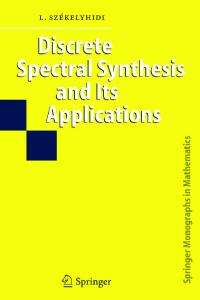Synthesis and Spectral and Coordination Properties of Perhalogenated Tetraphenylporphyrins
- PDF / 661,777 Bytes
- 7 Pages / 612 x 792 pts (letter) Page_size
- 93 Downloads / 337 Views
hesis and Spectral and Coordination Properties of Perhalogenated Tetraphenylporphyrins Yu. B. Ivanovaa,*, N. V. Chizhovaa, and N. Zh. Mamardashvilia a
G.A. Krestov Institute of Solution Chemistry of the Russian Academy of Sciences, Ivanovo, 153040 Russia *e-mail: [email protected] Received June 17, 2020; revised June 17, 2020; accepted June 29, 2020
Abstract—The reaction of [5,10,15,20-tetrakis(2,6-dichlorophenyl)porphyrinato]zinc(II) with N-halosuccinimides in chloroform–methanol, chloroform–butan-1-ol, or DMF gave [2,3,7,8,12,13,17,18- octachloro(bromo)-5,10,15,20tetrakis(2,6-dichlorophenyl)porphyrinato]zinc(II) which were treated with trifluoroacetic acid to obtain the corresponding free porphyrin ligands. The synthesized compounds and their dianions were studied by electronic absorption and 1H NMR spectroscopy and mass spectrometry. The kinetic parameters of the complexation of these ligands with zinc in the systems acetonitrile–Zn(OAc)2 and acetonitrile–Zn(OAc)2–1,8-diazabicyclo[5.4.0]undec-7-ene in the temperature range 298–318 K were determined. Keywords: halogen-substituted tetraphenylporphyrins, zinc complexes, bromination, chlorination, spectral and coordination properties
DOI: 10.1134/S1070363220110122 Porphyrins and their metal complexes have found application as components of solar cells, semiconductors, sensor systems, and photosensitizers for photodynamic therapy [1]. Metal porphyrins containing nitro groups and bromine atoms on the macroheterocycle have been found to be efficient in the treatment of malignant tumors [2]. Halogen-substituted porphyrins are also used in the manufacture of new materials with catalytic and nonlinear optical properties [3]. It is known that bromination of [5,10,15,20-tetrakis(2,6dichlorophenyl)porphyrinato]zinc(II) (1) with N-bromosuccinimide (NBS) in boiling methanol gives [2,3,7,8,12,13,17,18-octabromo-5,10,15,20-tetrakis(2,6dichlorophenyl)porphyrinato]zinc(II) (2) in yield 45% [4]. The reactin of 1 with N-chlorosuccinimide (NCS) in boiling methanol afforded [2,3,7,8,12,13,17,18-octachloro5,10,15,20-tetrakis(2,6-dichlorophenyl)porphyrinato]zinc(II) (3). We previously synthesized unsymmetrical β-octabromo nitrophenylporphyrins [5] and isomeric tetrachlorooctabromo- and tetrabromoctachlorotetraphenylporphyrins [6] and studied their acid–base properties. In this work, dichlorophenyl derivative 1 was brominated with NBS in DMF and chloroform–methanol and chlorinated with NCS in chloroform–methanol and chloroform–
butan-1-ol. Treatment of the resulting halogenated zinc porphyrins with trifluoroacetic acid afforded 2,3,7,8,12,13,17,18-octabromo-5,10,15,20-tetrakis(2,6dichlorophenyl)porphyrin (4) and 2,3,7,8,12,13,17,18octachloro-5,10,15,20-tetrakis(2,6-dichlorophenyl)porphyrin (5) (Scheme 1). Initial zinc complex 1 was prepared by the complexation of 5,10,15,20-tetrakis(2,6-dichlorophenyl)porphyrin (6) with zinc(II) acetate, as well as by metal exchange of [5,10,15,20-tetrakis(2,6-dichlorophenyl)porphyrinato]cadmium(II) (7) with zinc(II) chloride in boiling DMF [7]. It was sh
Data Loading...











